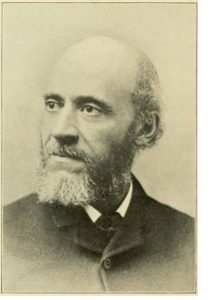 The city of Cincinnati, following Ohio law, set aside the education taxes on African American held properties for “Colored Public Schools” beginning in the 1850’s. Black men elected the school board, the only election in which they could vote. Peter Clark, later a Walnut Hills resident, served as the first teacher; it required a lawsuit to persuade white officials to release the funds to pay him. Despite further resistance, by the mid ’50’s the Colored Public Schools controlled the education of African American students in east and west “Common Schools”; within a few years, the system included the John I. Gaines High School and a “Normal School” for educating teachers. In 1862 the principals of the two Cincinnati Colored Common Schools both lived in Walnut Hills. Clark served as the principal of one of the Common Schools, then of the High School, and as superintendent of the Colored Schools.
The city of Cincinnati, following Ohio law, set aside the education taxes on African American held properties for “Colored Public Schools” beginning in the 1850’s. Black men elected the school board, the only election in which they could vote. Peter Clark, later a Walnut Hills resident, served as the first teacher; it required a lawsuit to persuade white officials to release the funds to pay him. Despite further resistance, by the mid ’50’s the Colored Public Schools controlled the education of African American students in east and west “Common Schools”; within a few years, the system included the John I. Gaines High School and a “Normal School” for educating teachers. In 1862 the principals of the two Cincinnati Colored Common Schools both lived in Walnut Hills. Clark served as the principal of one of the Common Schools, then of the High School, and as superintendent of the Colored Schools.
Walnut Hills north of McMillan did not join Cincinnati until 1870. While the laws changed and records are not entirely consistent, as early as 1859 the Colored Schools of Cincinnati included a line item “for educating students on Walnut Hills.” From 1870 Walnut Hills joined the Cincinnati Colored Public School system. In 1872 the Elm Street Colored School opened; it would later take the name Frederick Douglass School.
The Colored School Board as early as 1858 implored Black parents to send their children to school with a refrain that rings hauntingly true today:
“The duty of the colored American mother, is, to educate her children. Other duties are important, but none more important than this. If you wish to keep your children out of jail, the penitentiary, the poor houses, and dens of infamy, educate them. Nine tenths of all the crimes perpetrated, grow out of idleness and ignorance. If you consult the calendars of our State prisons, the estimate I have made will appear small. Go to our police court and there see the black eyes, the bloated faces, the ragged clothes, the haggard emaciated features of the one and twenty that are brought there from day to day, and the truth of our remark is vividly spread out before you.”